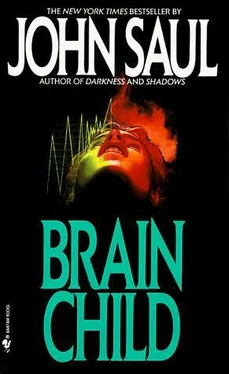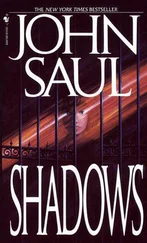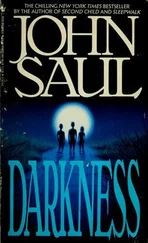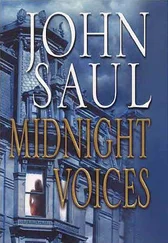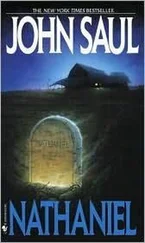John Saul - Brain Child
Здесь есть возможность читать онлайн «John Saul - Brain Child» весь текст электронной книги совершенно бесплатно (целиком полную версию без сокращений). В некоторых случаях можно слушать аудио, скачать через торрент в формате fb2 и присутствует краткое содержание. Год выпуска: 1985, ISBN: 1985, Издательство: Random House, Inc., Жанр: Ужасы и Мистика, на английском языке. Описание произведения, (предисловие) а так же отзывы посетителей доступны на портале библиотеки ЛибКат.
- Название:Brain Child
- Автор:
- Издательство:Random House, Inc.
- Жанр:
- Год:1985
- ISBN:978-0-30776793-6
- Рейтинг книги:5 / 5. Голосов: 1
-
Избранное:Добавить в избранное
- Отзывы:
-
Ваша оценка:
- 100
- 1
- 2
- 3
- 4
- 5
Brain Child: краткое содержание, описание и аннотация
Предлагаем к чтению аннотацию, описание, краткое содержание или предисловие (зависит от того, что написал сам автор книги «Brain Child»). Если вы не нашли необходимую информацию о книге — напишите в комментариях, мы постараемся отыскать её.
Brain Child — читать онлайн бесплатно полную книгу (весь текст) целиком
Ниже представлен текст книги, разбитый по страницам. Система сохранения места последней прочитанной страницы, позволяет с удобством читать онлайн бесплатно книгу «Brain Child», без необходимости каждый раз заново искать на чём Вы остановились. Поставьте закладку, и сможете в любой момент перейти на страницу, на которой закончили чтение.
Интервал:
Закладка:
“It’s not a photograph. It’s a computer-generated graphic representation of Alexander Lonsdale’s brain.” He paused a beat; then: “Before the accident.”
Mallory’s gaze shifted back to the screen. “Here’s what happened,” he heard Torres’s voice say. “Or, more exactly, here’s a reconstruction of what happened.” He typed some instructions into the keyboard in front of him, and suddenly the image on the monitor began to move, turning upside down. Then, at the bottom of the screen, another shape came into view. As the three of them watched, the image of the brain came into contact with the other object, and suddenly began to distort. It was, Marsh realized, just like watching a movie of someone’s head being smashed against a sharp rock.
In slow motion, he could see the skull crack, then splinter and begin to cave in.
Beneath the skull, brain tissue gave way, part of it crushed, part of it torn. Fragments of skull broke away, lacerating the brain further. Frank Mallory and Raymond Torres watched in silence, but Marsh was unable to stifle a groan of empathic pain. Suddenly it was over, and the brain was once again right-side-up. And then, as Torres tapped more instructions into the computer, the image changed again.
“Christ,” Mallory whispered. “That’s not possible.”
“What is it?” Torres demanded.
“It’s Alex’s head,” Mallory breathed. Marsh, his face ashen, gazed at Mallory, but the other man’s eyes remained fixed on the screen. “It’s his head,” Mallory breathed. “And it looks just the way it did when they brought him into the hospital. But … how?”
“We’ll get to that,” Torres replied. Then: “Dr. Mallory, I want you to concentrate on that image very hard. This is very important. How close is that picture to what you saw when they brought the patient in?” He held up a cautioning hand. “Don’t answer right away, please. Examine it carefully. If you need me to, I can rotate the image so you can see it from other angles. But I need to know how exact it is.”
For two long minutes, as Marsh looked on in agonized silence, Mallory examined the image, asking Torres to turn it first in one direction, then in another. At last he nodded. “As far as I can tell, it’s perfect. If there are any flaws, I can’t see them.”
“All right. Now, the next part should be easier for you. Don’t say anything, just watch, and if there’s anything that doesn’t look as you remember it, tell me.”
As they watched, the image came to life once more. A forceps appeared and began removing fragments of bone from the brain. Then the forceps was gone, and a probe appeared. The probe moved, and a small bit of brain tissue tore loose. Mallory winced.
It went on and on, in agonizing detail. For each fragment of bone that was removed from the wound, a new wound was inflicted on Alex’s brain. And then, after what seemed an aeon, it was over.
Frank Mallory was staring at an exact image of Alex’s brain after he’d finished cleaning his wounds.
“Well?” Torres’s voice asked.
Mallory heard his own voice shake as he spoke. “Why did you show me that? Just to prove my incompetence?”
“Don’t be ridiculous,” Torres snapped. “Aside from the fact that I don’t need to waste my time with such a thing, you’re not an incompetent. In fact, you did as good a job under the circumstances as could have been expected. What I need to know is whether that reconstruction was accurate.”
Mallory chewed his lip, then nodded. “I’m afraid so. I’m sorry — I was doing my best.”
“Don’t be sorry,” Torres remarked coldly. “Just think about it.”
“It’s accurate,” Mallory assured him. “Now, can you tell us how you did it?”
“I didn’t do it,” Torres replied. “A computer did it all. For the last”—he glanced at the clock on his desk—“six hours, we’ve been feeding the computer information. Much of it the results of the CAT scan your lab did in La Paloma. Fortunately, that was a good job too. But our computer goes a lot further than yours. Your machinery can display any aspect of the brain, from any angle, in two dimensions. Ours is much more sophisticated,” he went on, and suddenly his eyes, so cool and aloof until now, took on a glowing intensity. “Once it had all the data, it was able to reconstruct everything that happened to Alexander Lonsdale’s brain from the first impact to the time of the CAT scan. For ourselves, an educated guess would have been the best we could do. We would have been able to extrapolate the approximate shape of the traumatizing instrument, and the probable angle from which it struck. And that would have been about all. But the wounds are extensive, and the computer is designed to handle a great many variables simultaneously. According to the computer, what you just saw is 99.624 percent accurate, given that the input was accurate. That’s why I wanted you to look at the reconstruction. If there were any basic errors in the data, they would have been magnified by the extrapolation process to the point where you’d have seen something significantly in error. But you didn’t, so we can assume that what we saw is what happened.”
While Mallory sat in silence, Marsh voiced the question that was in both their minds. “Why is that important? It seems to me that what comes next is what we should be concerned with.”
“Exactly,” Torres agreed. “Now, watch carefully. What you’re about to see is going to be at high speed, but it’s what we think we can do for Alexander.”
“Everyone calls him Alex,” Marsh interjected.
Torres’s brows arched slightly. “Very well. Alex. It makes no difference what we call him.” He ignored the flash of anger in Marsh’s eyes, and his fingers once more flew over the keyboard. The picture began to change again. As the two doctors from La Paloma watched in fascination, layers of brain tissue were peeled back. Certain tissue was removed entirely; some was simply maneuvered back into place. The chaos of the wound began to take on a semblance of order, and then, slowly, the mending process began, beginning deep within the medulla and proceeding outward through the various lobes of the brain. At last it was over, and the image on the screen was once again filled with the recognizable shape of a human brain. Certain areas, however, had taken on various shades of red, and Marsh’s frown reflected his puzzlement.
“Those are the areas that are no longer functional,” Torres told him before he could ask his question. “The pale pink ones are deep within the brain, the bright red ones on the surface. The gradations, I think, are obvious.”
Mallory glanced at Marsh, whose attention seemed totally absorbed by the image on the screen. Finally he turned to Torres, his fingers interlaced beneath his chin. “What you’ve shown us is pure science fiction, Dr. Torres,” he said. “You can’t cut that deep, and make repairs that extensive, without killing the patient. Beyond that, it appears to me that what you’re proposing to do is to reconstruct Alex’s brain, even to the extent of repairing nerve cells. Frankly, I don’t believe you or anyone else can do that.”
Torres chuckled. “And, of course, you’re right. I can’t do that, nor can anybody else. Unfortunately, I’m much too large, and my hands are much too clumsy. Which is why Alexan— Alex,” he corrected himself, “is going to have to be brought here.” He switched off the monitor and rose from his chair. “Come with me. I want to show you something.”
They left Torres’s office and walked down a corridor that led to the west wing of the building. A security guard looked up at them as they passed, then, recognizing Torres, went back to gazing at the television monitor at his desk. Finally they turned into a scrub room, beyond which was an operating room. Wordlessly Torres stood aside and let the two others precede him through the double doors.
Читать дальшеИнтервал:
Закладка:
Похожие книги на «Brain Child»
Представляем Вашему вниманию похожие книги на «Brain Child» списком для выбора. Мы отобрали схожую по названию и смыслу литературу в надежде предоставить читателям больше вариантов отыскать новые, интересные, ещё непрочитанные произведения.
Обсуждение, отзывы о книге «Brain Child» и просто собственные мнения читателей. Оставьте ваши комментарии, напишите, что Вы думаете о произведении, его смысле или главных героях. Укажите что конкретно понравилось, а что нет, и почему Вы так считаете.
